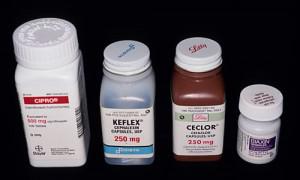 Dr. Margaret Chan, the recently reappointed Director-General of the World Health Organization, delivered the keynote speech last week at the Conference on Combating Antimicrobial Resistance. The Copenhagen meeting of European Union public health officials was held to discuss what could be done to solve the growing problem of microbial resistance to antibiotics in the EU and beyond.
Dr. Margaret Chan, the recently reappointed Director-General of the World Health Organization, delivered the keynote speech last week at the Conference on Combating Antimicrobial Resistance. The Copenhagen meeting of European Union public health officials was held to discuss what could be done to solve the growing problem of microbial resistance to antibiotics in the EU and beyond.
In her address, Dr. Chan pointed to the fact that drug resistance was a global phenomenon, citing air travel, global trade in food, and medical tourism as major contributors. She also mentioned the widespread use of antibiotics in healthy animals, adding that there are regions in the world where more antimicrobials are used in animals than in sick humans.
Dr. Chan lauded the efforts of the conference’s host country Denmark, pointing to officials who made the decision back in the late 1990s to ban the use of growth enhancing antibiotics in food producing animals. In a follow-up study of the Danish decision conducted by the World Health Organization, the ban reduced human health risks without significantly harming animal health or farmers’ incomes.
While many countries have followed the Danish model by banning the use of antibiotics in healthy livestock, the problem of antibiotic resistant pathogens is still increasing worldwide. First line antibiotics are losing their effectiveness, and are being replaced by drugs which are more expensive, toxic, and require longer treatment periods.
Dr. Chan cited as an example that over 650,000 of the 12 million cases of tuberculosis last year were “multi-drug resistant”. Not only do these cases require treatment with costly medications in short supply, but only 50% will be cured. With other emerging pathogens resistant to all known antibiotics, some experts believe that we are moving back to the pre-antibiotic era, where even a superficial skin infection or strept throat could be fatal.
The pipeline for new antibiotics is almost dry. Pharmaceutical companies seem less interested in searching for new solutions than in the past because of the tremendous expense involved in research and development. An additional deterrent is that irrational use of new antibiotics accelerates inevitable resistance.
Dr. Chan concluded her remarks by challenging her listeners “Prescribe antibiotics appropriately and only when needed. Follow treatment correctly. Restrict the use of antibiotics in food production to therapeutic purposes. And tackle the problem of substandard and counterfeit medicines.” Otherwise, she added,”the threat, as you have noted, is indeed global, extremely serious, and growing.”
Photo by scottcamazine.

